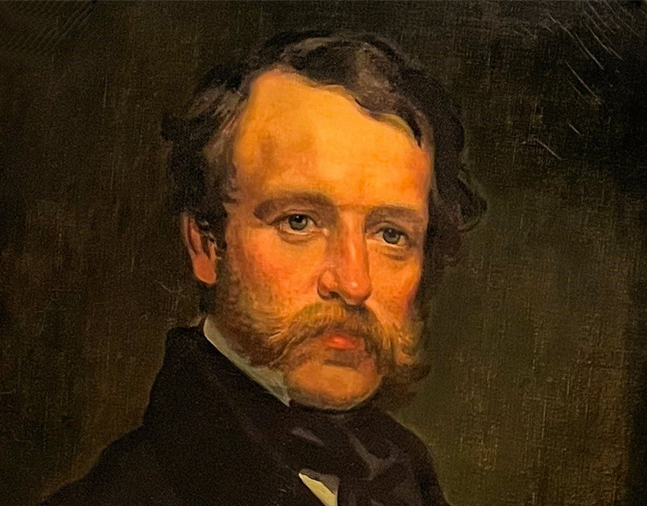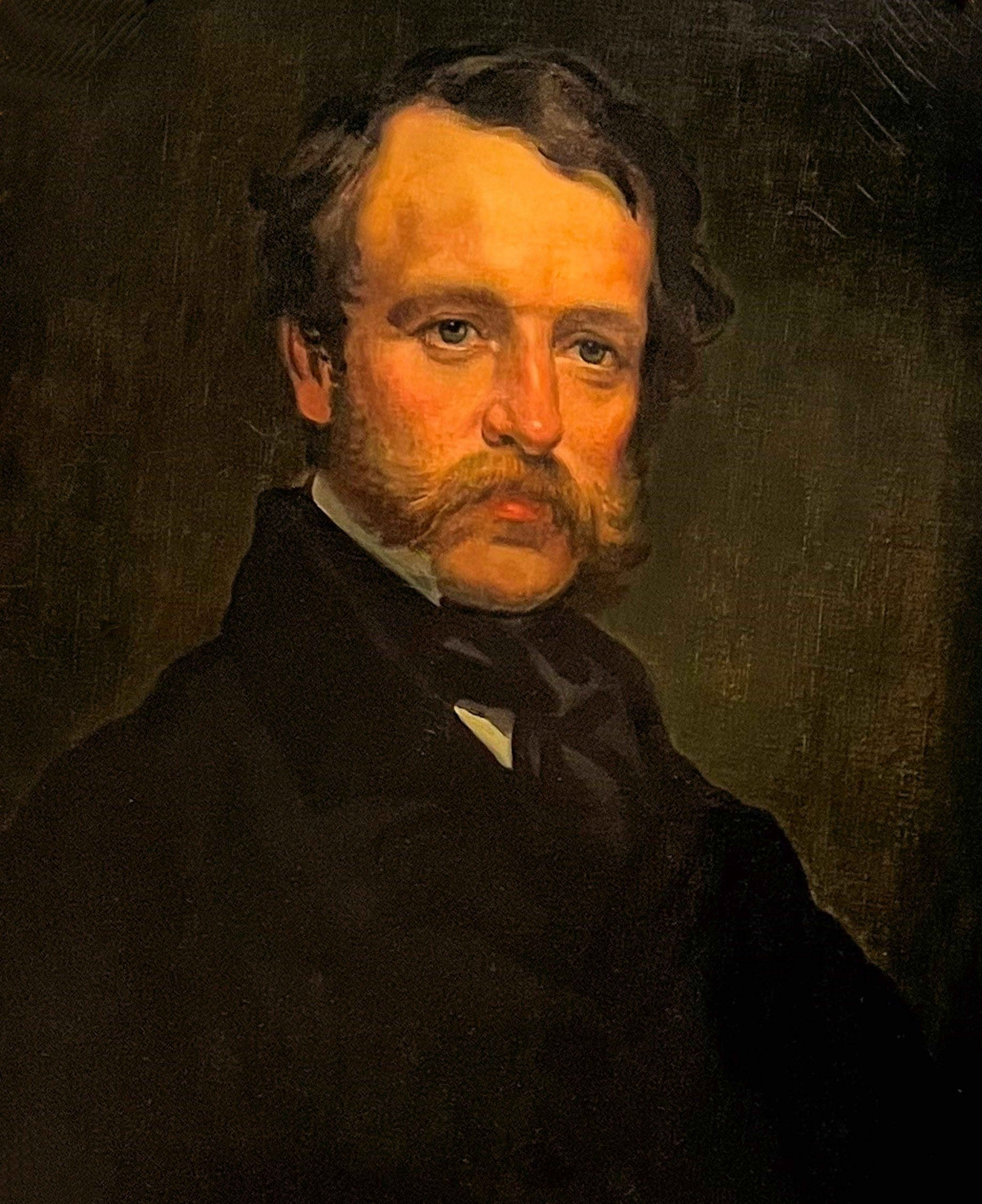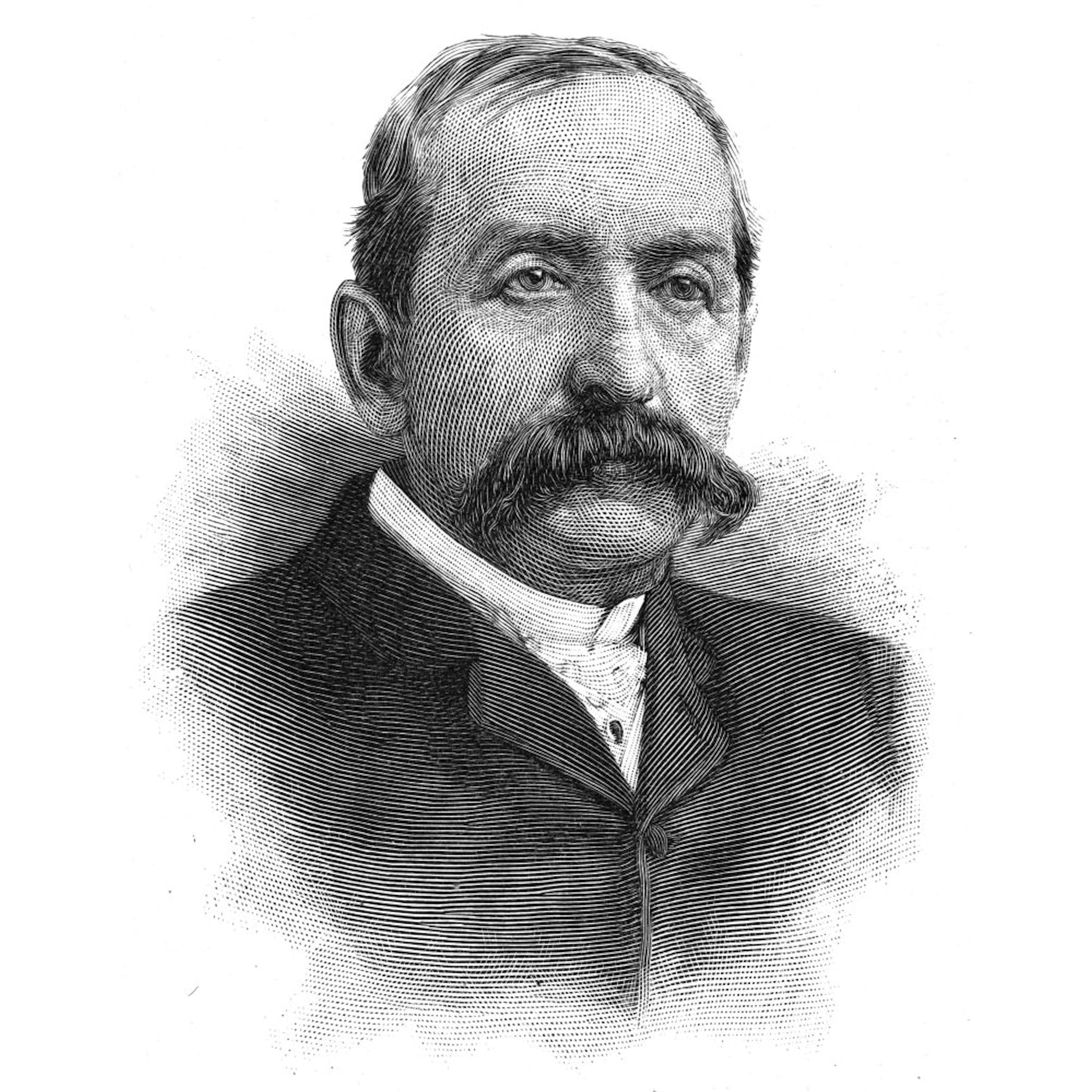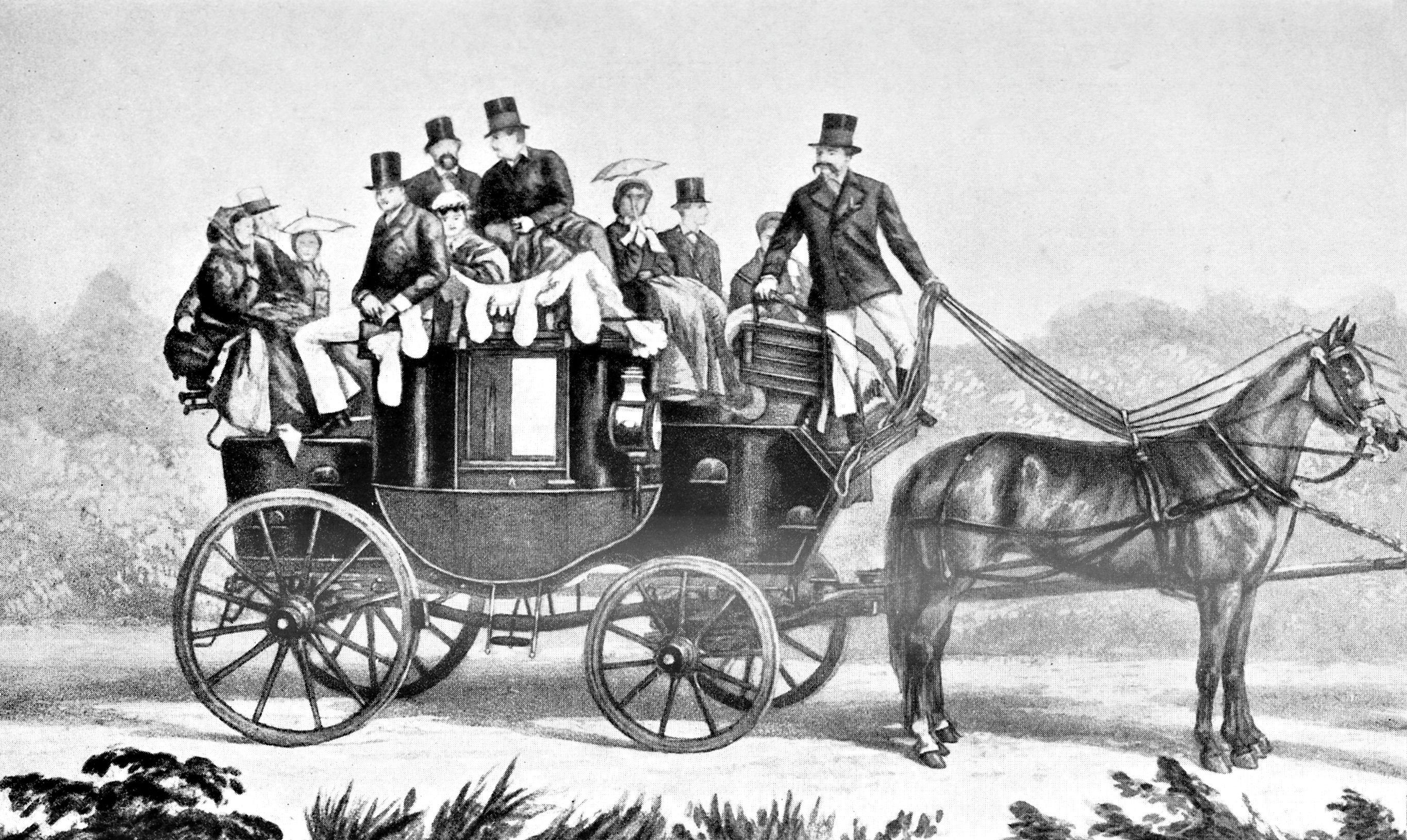Leonard W. Jerome
Leonard Jerome’s imprint on American thoroughbred racing in the 19th century — specifically on the prominent and prestigious New York scene — was enormous. Known as the “King of Wall Street,” Jerome was a flamboyant stock speculator, financier, and patron of the arts who became a powerful figure in the thoroughbred game as the driving force behind the conception of three major racetracks in the New York City area. One of those tracks, the iconic Jerome Park, introduced the classic Belmont Stakes.

2023
Nov. 3, 1817, Pompey, New York
March 3, 1891, Brighton, England
Biography
Leonard Jerome’s imprint on American thoroughbred racing in the 19th century — specifically on the prominent and prestigious New York scene — was enormous. Known as the “King of Wall Street,” Jerome was a flamboyant stock speculator, financier, and patron of the arts who became a powerful figure in the thoroughbred game as the driving force behind the conception of three major racetracks in the New York City area. One of those tracks, the iconic Jerome Park, introduced the classic Belmont Stakes.
Born in Pompey, New York, in 1817, Jerome was one of 10 children — he had eight brothers and one sister — who grew up on the family farm in Onondaga County. Jerome studied briefly at Princeton University (then known as the College of New Jersey) before leaving for Union College in Schenectady, New York, where he graduated with a law degree. He then practiced law for a time with an uncle in Rochester before, according to the New York Times, his disposition became “too restless to find contentment in the drudgery of the law, and so for a short time he drifted into the more exciting arena of journalism.” This led Jerome and one of his brothers, Lawrence, to start the Rochester Native American paper.
The Times said the Native American became a success “as a strong Whig journal, and the editors scored their opponents without gloves. The paper … introduced the Jerome brothers to public notice, so that when Millard Fillmore became President, Leonard was sent as Consul to Trieste and Lawrence was made Collector of the Port of Rochester. The election of Franklin Pierce returned the Democrats to power, and involved the retirement of the Jeromes from national politics. Then they sold their paper and began their remarkable career in (New York City).”
Jerome became a significant public figure in the Big Apple. His career was “remarkable alike for its alternation of enormous gains and losses and its success as a whole,” wrote the Times. Along with another brother, Addison, Jerome formed a partnership with William R. Travers in a financial firm that soon became a powerhouse on Wall Street. It was so successful that the Times said it “startled the boldest operators” and Jerome’s name “became known throughout the country as that of one of the boldest, coolest, and most successful manipulators in Wall Street.”
Through his association with Travers, Jerome took an interest in thoroughbred racing in the mid-1860s. Travers helped establish Saratoga Race Course and served as its first president. Jerome was named Saratoga’s vice president. In “They’re Off! Horse Racing at Saratoga,” author Edward Hotaling suggests Jerome was not content with the background role at Saratoga. According to Hotaling, Jerome “had to have his track. In fact, he had to have several tracks, and he started by triumphantly founding the American Jockey Club in Manhattan to run the first one.”
In 1866, Jerome bought the 230-acre estate and mansion of James Bathgate in what was then rural Westchester County, New York. Jerome and August Belmont I built Jerome Park on that land and held the inaugural Belmont Stakes there in 1867. The Belmont was contested at Jerome Park until 1890. Other key races inaugurated at Jerome Park include the Champagne Stakes, Juvenile Stakes, and Ladies Handicap. Racing historian William H. P. Robertson described Jerome Park as “the fanciest racing plant in America. Among the features of Jerome Park … was a clubhouse on the order of a luxury hotel. Besides spacious dining rooms and a magnificent ball room, there were facilities for sleighing, trap shooting, skating and, later, polo. Overnight accommodations were also available, and it was quite the fashion for an owner to entertain his friends at a lavish ball, after which they could spend the night in the clubhouse and watch the morning gallops the next day.”
The Times eagerly anticipated the opening of Jerome Park.
“A feverish interest is felt in all sporting circles in the approaching inauguration of the superb course at Jerome Park,” the paper commented. “Racing is fast becoming with us a national sport, and not only a sport but a matter of marked interest and general participation. The evils attending it are such as can be remedied by good management and prompt policemen. If the parties in charge of a race or a race track are men to whom the improvement of stock, the sport and the excitement are the object, rather than the turning into selfish pockets a few thousand dollars, it is obvious that for their own credit, reputation and self-respect they are bound to insure order and preserve decorum about the grounds.”
The Times, which Jerome was a significant shareholder of for many years, was equally giddy in its reporting on Jerome Park after the track opened.
“Fate smiles upon the American Jockey Club. Its inaugurative meeting opened with a success unprecedented in the annals of American turf,” the Times reported. “As a mere popular success it was complete; as a record of turf intelligence it was most interesting; as an event in the progress of reporting it opens an era.”
Jerome went on to establish his own racing stable. He paid $40,000, a record price for a thoroughbred at the time, for future Hall of Fame member Kentucky, who was previously owned by Travers in partnership with John Hunter and George Osgood. Kentucky was unquestionably the best horse in America when Jerome purchased him as a 5-year-old in 1866. Kentucky won his 19th consecutive race on Jerome Park’s opening day, Sept. 25, 1866, in the Inauguration Stakes, promoting the purchase by Jerome. Kentucky made it 20 in a row in his first and only start for Jerome, romping in the Grand National Handicap at Jerome Park while carrying 19 or more pounds than any other horse in the field. With suitable competition no longer interested in facing Kentucky, Jerome retired the great champion to the breeding shed.
Jerome founded the Coney Island Jockey Club in 1879. The organization held race cards at Prospect Park in New York City while constructing the Sheepshead Bay Race Track, which opened in 1880. Jerome was backed in the Sheepshead Bay endeavor by such racing luminaries as Belmont, Travers, Pierre Lorillard IV, and William K. Vanderbilt. In its first year, Sheepshead Bay played host to a famous match race between future Hall of Famer Luke Blackburn and Uncas, which Luke Blackburn won by 20 lengths. Sheepshead Bay was the home to numerous premier events, including the Suburban Handicap, first contested in 1884, and the Futurity Stakes, which debuted in 1888 and featured the richest purse in American history to that date. The inaugural Futurity winner, Proctor Knott, earned $41,675. In comparison, the 1888 Kentucky Derby winner’s share was $4,740, and that year’s Belmont Stakes winner earned $3,440. In 1886, Sheepshead Bay became the first oval track in America to add a turf course.
Jerome was also instrumental in the building of Morris Park, which opened in 1890 as a successor to Jerome Park. John Albert Morris was the majority shareholder with Jerome on board as a partner and track president. Morris Park held several prominent stakes races, including the Belmont from 1890 through 1904, as well as the Champagne and Matron, and the Manhattan and Metropolitan handicaps. On June 10, 1890, Morris Park became the only track in American history to play host to two races that later became part of the Triple Crown series on the same day, as both the Belmont (won by Burlington) and Preakness (won by Montague) were featured on the same card.
Jerome was president of both Sheepshead Bay and Morris Park at the time of his death at the age of 73 in March 1891. Jerome died of heart failure in Brighton, England, with his wife, Clarissa, and his three daughters by his side. He had been suffering for some time with rheumatism and gout. Jerome had been in England since the previous October.
The Jerome Handicap, which was first contested in 1866 at Jerome Park, remains a fixture at Belmont Park and is one of the oldest stakes races in America. Jerome’s daughter, Jennie, married Lord Randolph Churchill and became the mother of Sir Winston Churchill.
The tracks Jerome built and presided over are long gone. Jerome Park, despite its grandeur and importance in racing, existed for only 28 years; New York City purchased it and built a reservoir on the land. The former Westchester County property was annexed into the city and is now part of the Bronx. Morris Park met its demise in 1904. John Albert Morris died in 1895 and the track began to struggle in the early 1900s. Belmont Park, led by August Belmont II, opened in 1905 and assumed many of the former stakes races held at Morris.
Sheepshead Bay was the last of the tracks tied to Jerome to fade into history. In 1908, the administration of New York Gov. Charles Evans Hughes signed into law the Hart-Agnew bill that effectively banned all racetrack betting in the state. Sheepshead Bay was already facing stressful times. In 1909, Daily Racing Form reported that “Sheepshead Bay, which for years led the country in daily average (purse) distribution, yielded first place in 1909 to Belmont Park, which August Belmont and his associates are ambitious to make the ‘turf headquarters of America.’” A 1910 amendment to the Hart–Agnew legislation added further restrictions that made the owners and directors of a racetrack personally liable for any betting done on their premises, with or without their consent. Such severe laws meant that by 1911 all racetracks in the state ceased operations. Although a 1913 court ruling paved the way for racing to resume, by then it was too late for Sheepshead Bay to recover. The track was ultimately sold and used for automobile racing.
Much of New York’s rich racing history would not have existed without the contributions of Leonard Jerome. In his obituary, the Times said he “held a commanding social position for more than 30 years” and “as a turfman, he was for a long time without a peer in the country.”
Media







